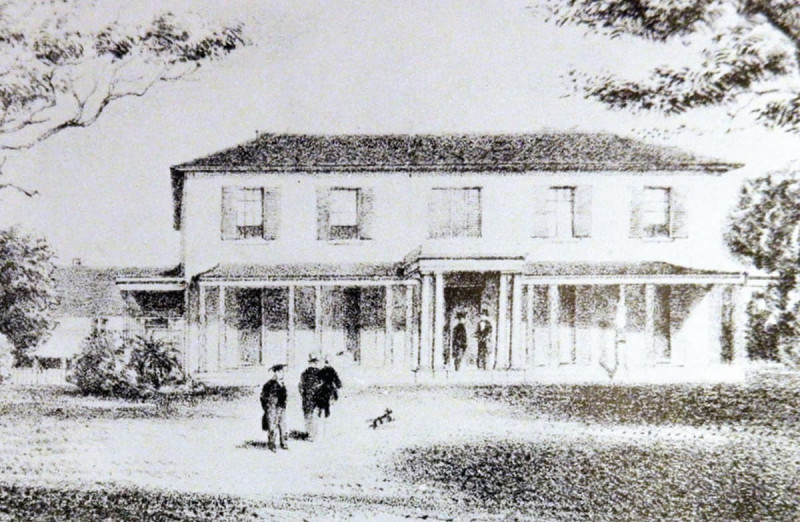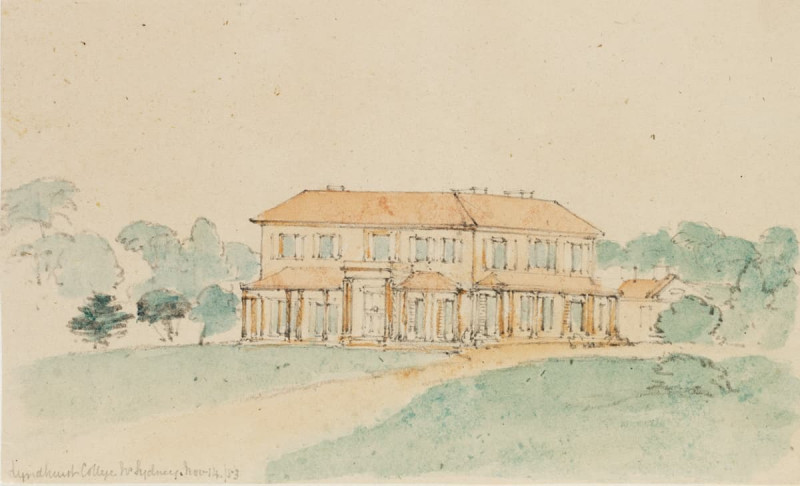Completed by 1837, Lyndhurst survives with Toxteth Park, also designed by John Verge, as a structure of major significance. It was built for surgeon and inspector of colonial hospitals James Bowman who purchased 36 acres from Charles Cowper, a buyer in the original 1828 auctions. Bowman was the husband of John and Elizabeth Macarthur’s daughter Mary (whose dowry included 2000 merino sheep and more than 200 cattle). With water frontage to Blackwattle Bay, the Glebe mansion was similar to Verge’s Camden Park but had larger service wings and differed in room arrangement.
A victim of the 1840s depression, James Bowman died suddenly in 1846, leaving a widow and five children. The property was bought by her brothers James and William who sold it to the Church of England after which it functioned as a theological college before being purchased by the Catholic Church in 1852 for use as a seminary.
The Lyndhurst Estate was subdivided in 1878 and 1885. By the 20th century small terrace houses and new streets completely hemmed in the original house — used at various times as a maternity hospital, rooming house, ice cream factory, timber works and printing workshop.
In the late 1960s Lyndhurst was threatened with demolition to make way for one of a series of expressways planned to cut through Glebe. Following a long public campaign by bodies (including the Glebe Society and the Builders Labourers Federation) and a change of State government, the proposal was abandoned.
Restored by 1984, Lyndhurst became the headquarters of the Historic Houses Trust. After 2005 it was privately owned.




